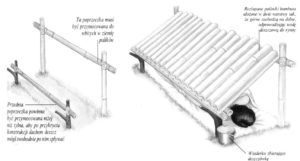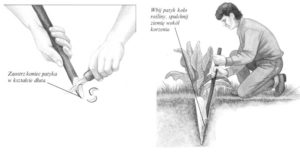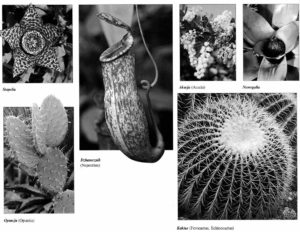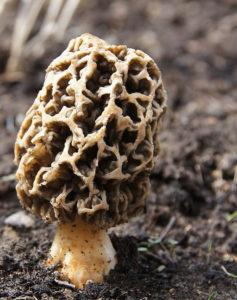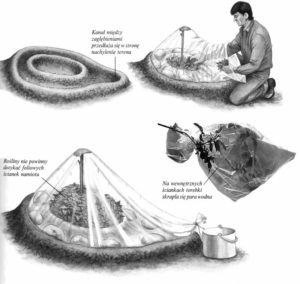W ciepłym i wilgotnym klimacie strefy równikowej spotyka się wielką różnorodność gatunków roślin. Brak wyraźnych pór roku w tym obszarze powoduje, że rośliny bujnie rozwijają się przez cały czas. Jest obfitość gatunków roślin jadalnych, w tym wiele pożywnych owoców i warzyw. Zawsze spróbuj nieznaną Ci roślinę, zanim ją zjesz i staraj się upewnić, czy nie jest trująca. Oto kilka najczęściej spotykanych roślin w tej strefie.
Bambus (Pseudosasa)
Zetnij młodą łodygę bambusa u podstawy i rozszczep ją nożem. Wybierz delikatny miąższ ze środka. Można go gotować w wodzie podobnie jak szparagi. Jadalne są również nasiona bambusa. Na świecie spotyka się wiele różnych odmian tej rośliny.
Szarłat (Amaranthus)
Ta roślina osiąga metr wysokości. Posiekaj liście i łodygi na drobne kawałki i ugotuj w osolonej wodzie jak szpinak. Młode liście można jeść na surowo w postaci sałatki.
Palmy (Palmae)
Młode pędy palm, takich jak kokosowa, arenga, sagowa, zwana też sagownicą, są jadalne. Z rdzenia pnia palmy sagowej otrzymuje się odżywczą mączkę skrobiową – sago, którą można gotować jak ryż. Nie wszystkie palmy są jednak jadalne.
Wierzchołek palmy
Wierzchołek niektórych palm bywa również jadalny. Można go gotować lub jeść na surowo. Nie jedz owoców palm, których nie znasz.
TEST SMAKOWY
Rozkrusz liście nieznanej rośliny i jeśli cuchnie lub wydzielona woń przypomina zapach migdałów, zostaw ją. Wetrzyj sok z liścia w skórę ręki od spodu. Jeśli nie pojawią się bąble lub inne niepokojące objawy, możesz przejść do następnego etapu testu. Połóż kawałek liścia na wargach, potem w kąciku ust, na końcu języka i pod językiem. Za każdym razem trzymaj liść około pięciu sekund. Jeśli nie pojawi się żaden nieprzyjemny posmak ani pieczenie, połknij liść. Poczekaj pięć godzin, nic nie jedząc. Jeżeli nie wystąpią żadne dolegliwości bądź najmniejsze choćby objawy złego samopoczucia, możesz zjeść roślinę.
Większość drzew i krzewów wydaje owoce w różnej postaci. Mogą to być pestkowce, jagody, orzechy, owoce szupinkowe (na przykład jabłka). Większość z nich ma duże wartości odżywcze. Pąki kwiatów, młode pędy oraz łyko niektórych drzew również nadają się dojedzenia. Część drzew wydziela też soki, które można pić. Igły niektórych drzew iglastych są bogate w witaminę C i można je zaparzać gorącą wodą przyrządzając herbatkę.
Świerk (Picea)
Łyko świerka jest bogate w witaminę C. Najlepiej zbierać je u dołu pnia, w pobliżu korzeni. Należy oddzielić je od twardej kory i gotować w wodzie, aż zmięknie i będzie nadawało się do zjedzenia. Z igieł świerkowych można przyrządzić ożywczy napar.
Klon (Acer)
Sok wypływający z naciętych pni klonu lub naturalnych pęknięć w korze zawiera dużo cukru. Syrop ten można gotować, aż zgęstnieje i powstanie słodki, kaloryczny syrop.
INNE DRZEWA
Młode igły sosny (Pinus) mają miły dla podniebienia smak i można z nich zaparzać herbatkę. Łyko osiki (Populus) ma duże wartości odżywcze, podczas gdy brzoza (Betula) wydziela bardzo smaczny sok. Chcąc zebrać sok, natnij korę drzewa w literę V, nie uszkadzając jednak więcej niż czwartą część obwodu pnia. Inne drzewa, które dostarczają pożywienia, to chleb świętojański, inaczej szarańczyn (Ceratonia) i tamaryndowiec; mają one mięsiste strąki.

.jpg)
